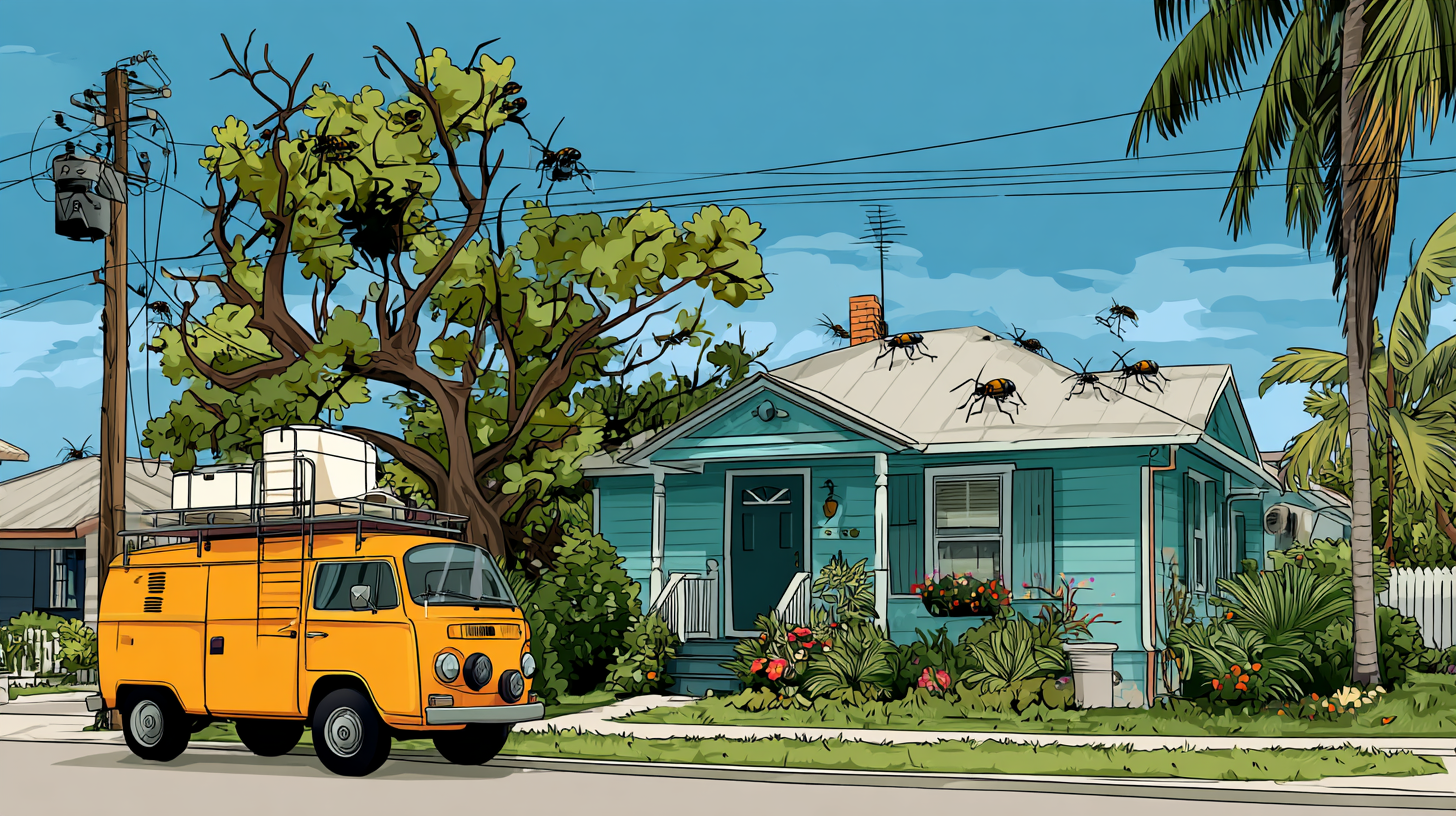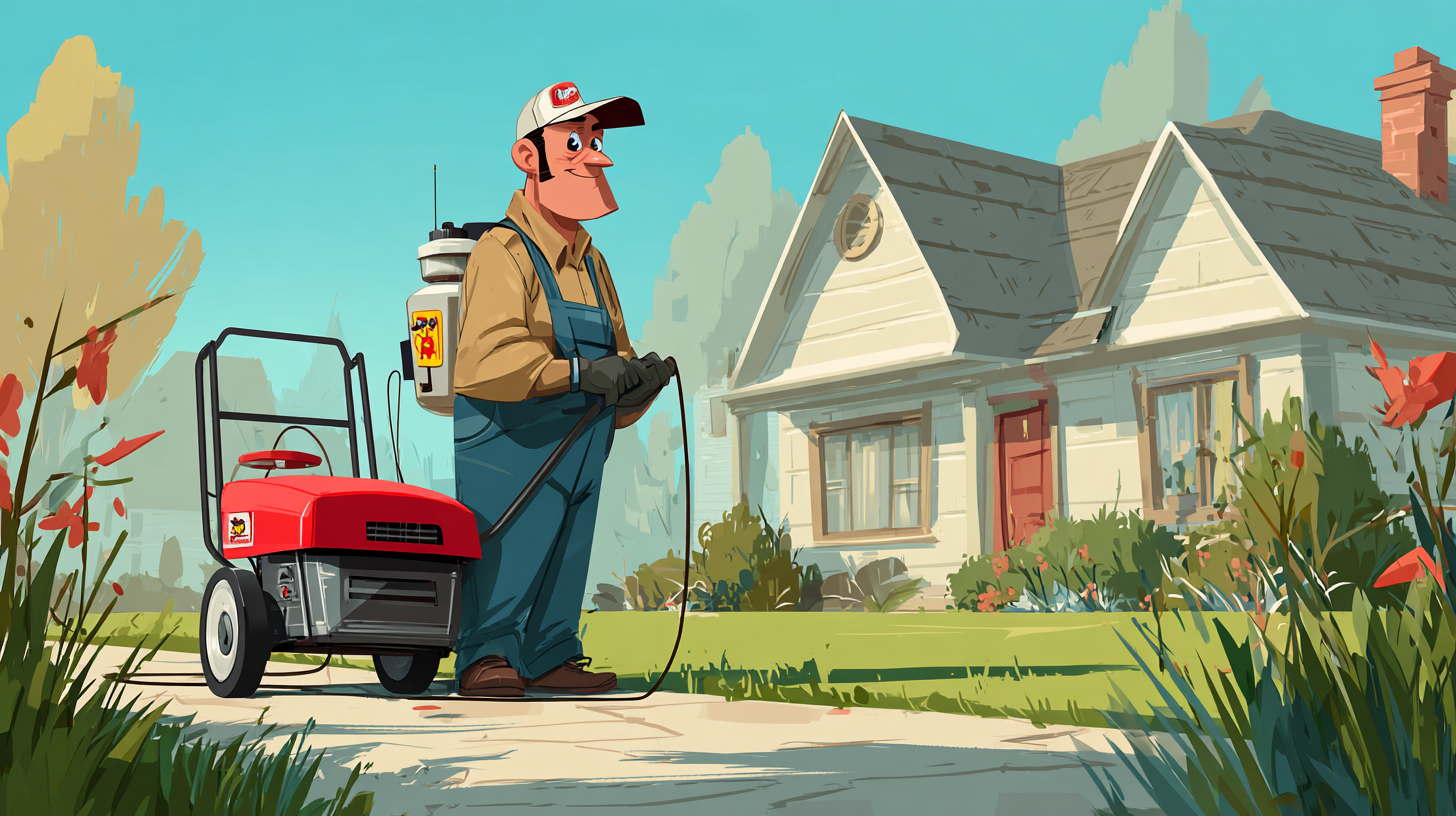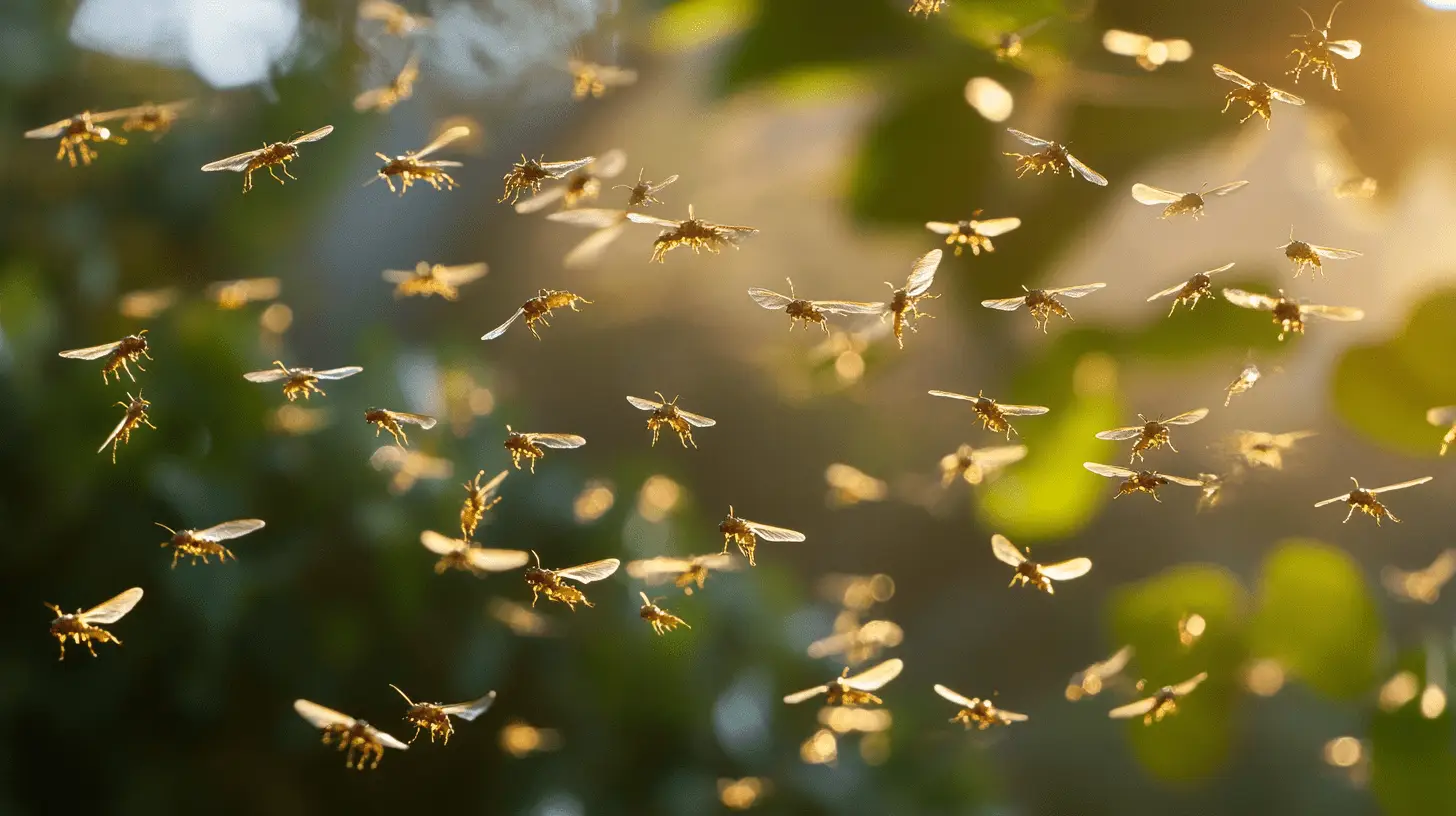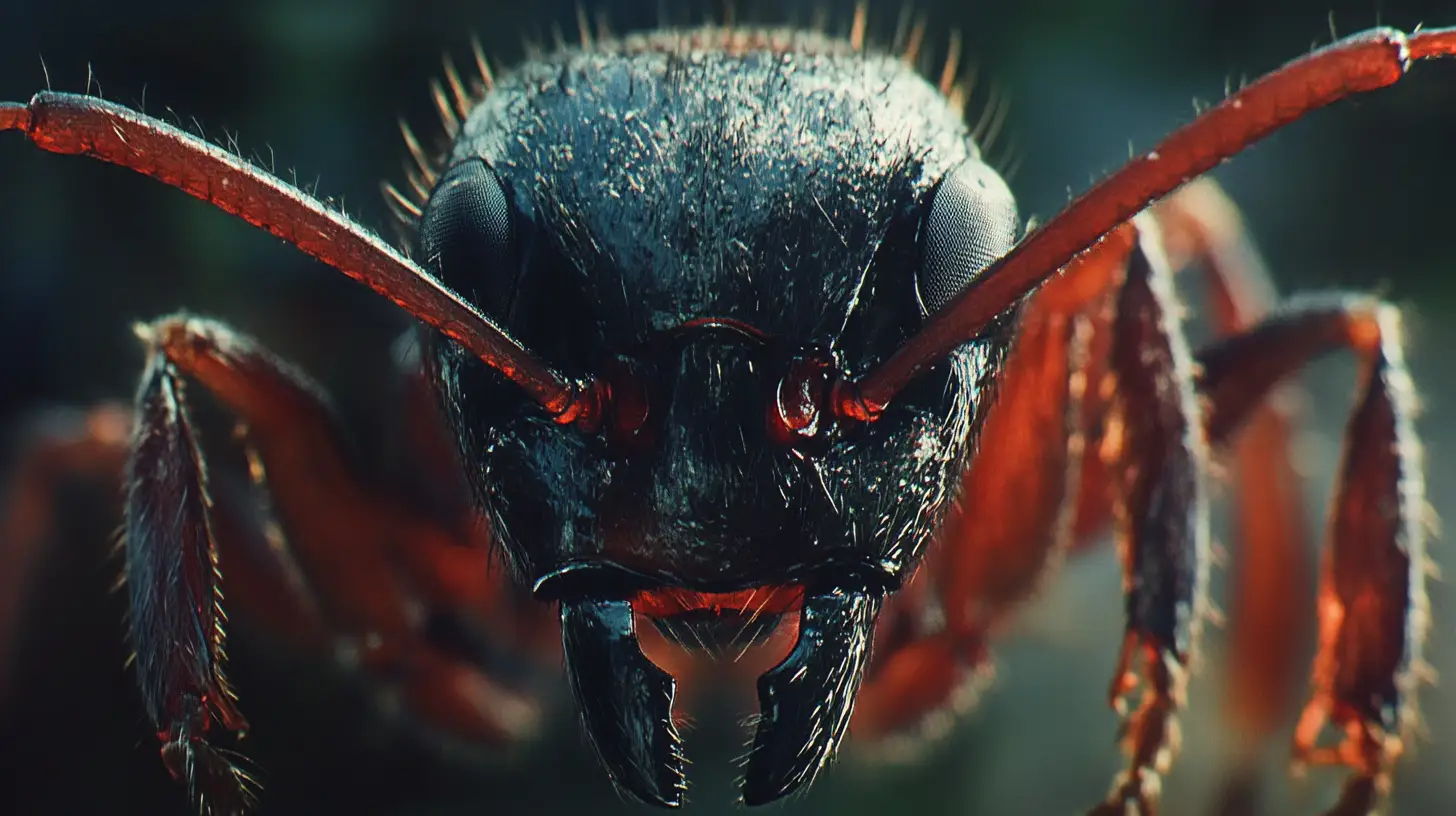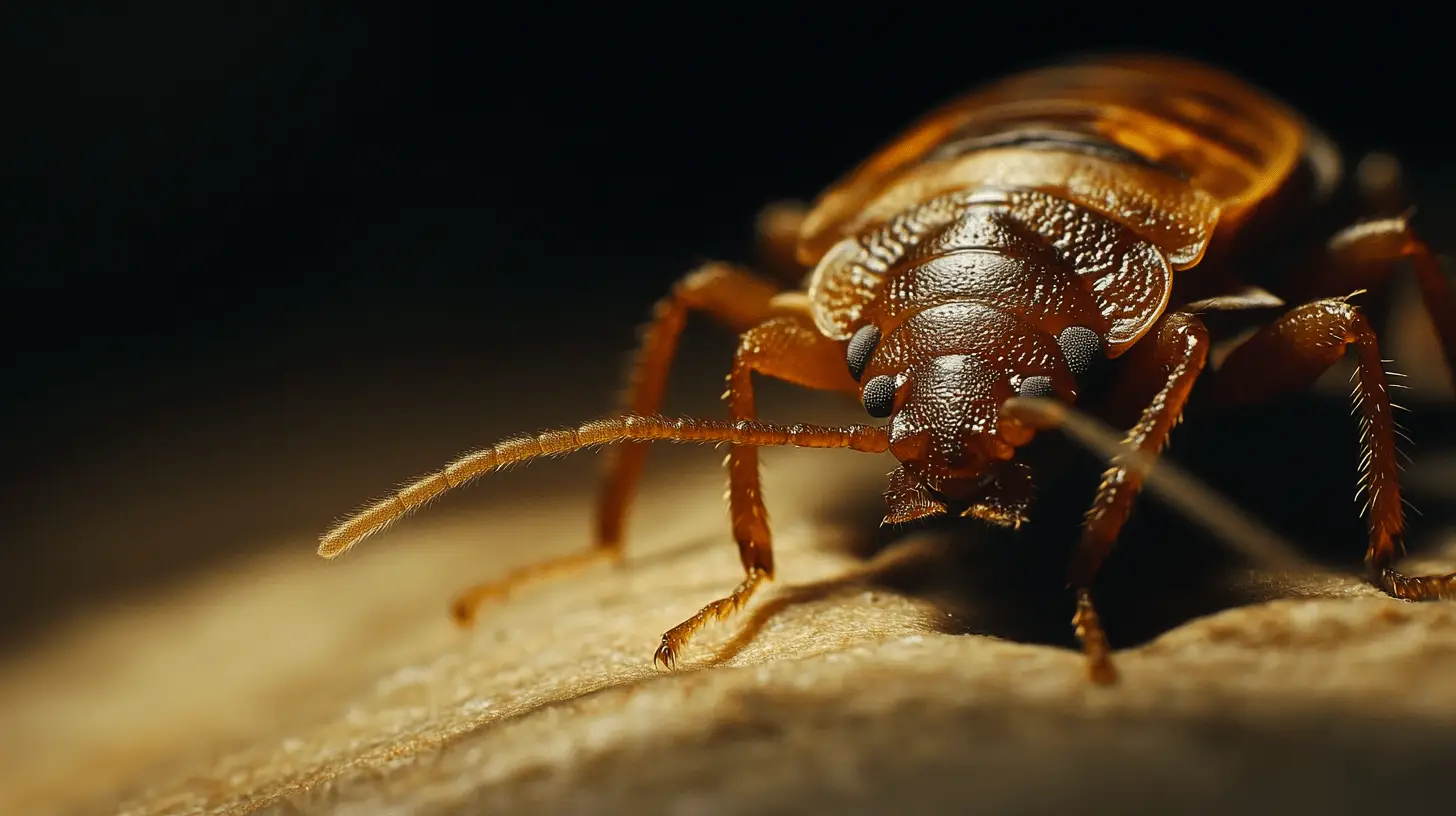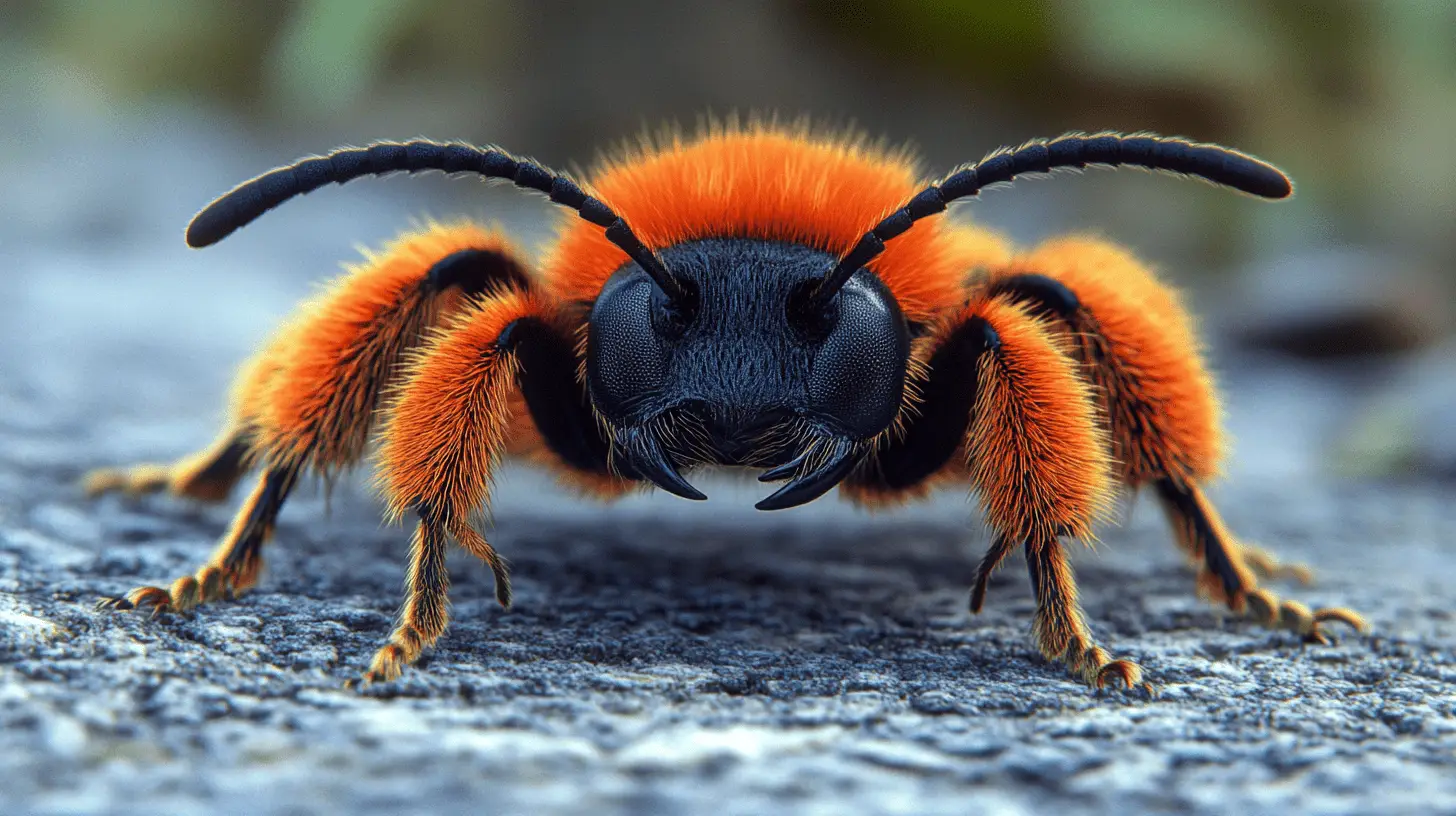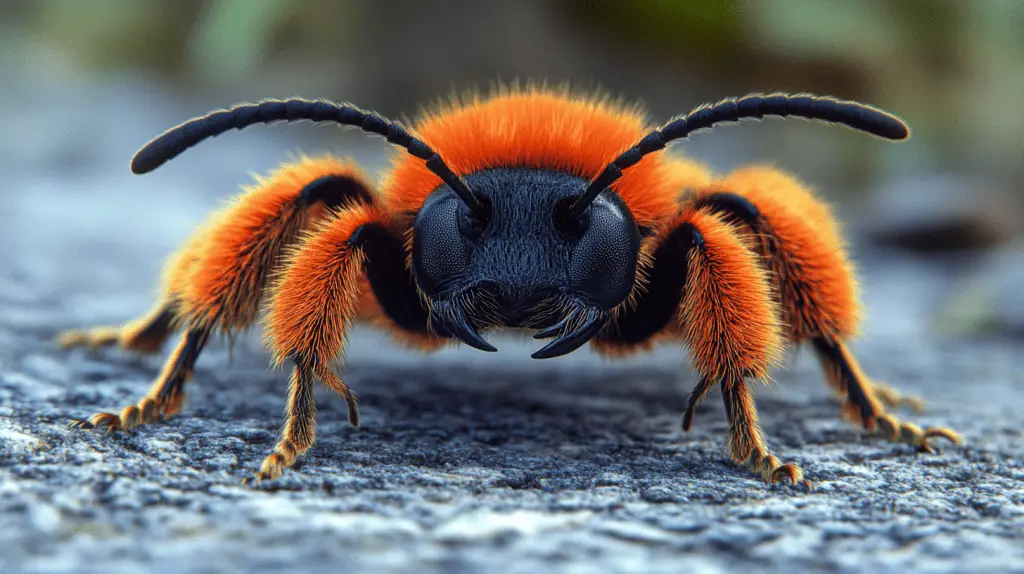
Table of Contents
Getting rid of velvet ants can be a priority for residents in Bradenton, especially given this insect’s unique characteristics. Despite the misleading name, velvet ants are not ants at all—they’re actually a type of solitary wasp known for their bright colors and painful sting, often called the “cow killer” sting. Recognizable by their vivid red, orange, or yellow fur, velvet ants are commonly spotted in sandy soil and under debris in Florida’s warm climate, particularly during the day when they forage.
While velvet ants don’t pose a direct threat to structures like some true ants, their presence can be unsettling, especially given their painful sting. In this post, we’ll explore the most effective and safe methods to get rid of velvet ants around your home, from natural deterrents to professional options. By understanding their habits and knowing how to address them, you can keep these “cow killers” at bay and ensure a safe, velvet ant-free environment.
Key Takeaways
- Understand Their Nature: Velvet ants are solitary wasps, not true ants, with painful stings delivered by females only. Their bright colors serve as a warning to predators.
- Use Targeted Control Methods: Options include insecticides for plants, dust treatments for nests, and direct sprays for on-the-spot control. Physical removal and yard maintenance also reduce velvet ant activity.
- Focus on Prevention: Keep your yard tidy, seal entry points, and minimize moisture sources around your home to discourage velvet ants from nesting nearby.
- Know When to Call in Professionals: If DIY methods aren’t enough or if you’re facing a large infestation, professional pest control services can provide thorough and safe solutions.
What are Velvet Ants?
Velvet ants, known as “cow killers,” are wingless wasps characterized by bright, fuzzy bodies. Females possess a painful sting, while males are harmless. Common in warm regions, they feed on nectar and lay eggs in other insects’ nests, where their larvae consume the host’s young.
Understanding Velvet Ants
Velvet ants, often called “cow killers” due to their intense sting, are actually a type of wasp from the family Mutillidae. Despite their name, they’re not true ants, though their appearance can easily lead to confusion.
Identification
Velvet ants are known for their unique and vibrant appearance. Their bodies are covered in dense, fuzzy hair that ranges from bright red and orange to yellow and black, serving as a visual warning to predators. Females are wingless and often resemble large ants, while males have wings but lack the ability to sting. These insects can vary in size, typically ranging from 1/8 inch to 1 inch (3-25 mm), depending on the species. Sexual dimorphism, or differences in appearance between males and females, is pronounced—only the wingless females have a powerful sting, while the winged males do not.
Behavior and Habitat
Velvet ants are solitary creatures, so unlike many wasps, they do not form colonies. You’ll typically see them alone rather than in groups. Their diet primarily consists of nectar from flowers, but their reproductive behavior is unique; females lay their eggs in the nests of ground-nesting bees and wasps. The velvet ant larvae then feed on the host larvae or pupae, making them parasitic. Active mainly during the warmer months, velvet ants are commonly found scurrying across sandy soil or bare ground in areas where their host insects reside.
Defense Mechanisms
Velvet ants are equipped with several powerful defenses. The female’s sting is one of the most painful among insects, earning them the intimidating “cow killer” nickname. Although the venom is not highly toxic, it can cause significant pain and discomfort. Their bright colors act as a visual deterrent, signaling danger to potential predators, while their tough exoskeleton makes them difficult for many animals to attack or consume. Additionally, when threatened, velvet ants can emit a squeaking sound as an extra defensive measure.
Range
Velvet ants are commonly found throughout the southeastern United States, including states like Florida, Texas, and other warm climates, where they thrive in open, sunny areas with sandy soils or grassy terrain.
Interesting Facts About Velvet Ants
- Velvet ants are wasps, not true ants, despite their name.
- They can produce a distinctive squeaking sound when handled or threatened.
- Their reproductive behavior is parasitic, with females laying eggs in the nests of other insects.
- Velvet ants employ multiple defensive strategies, including their painful sting and bright warning colors.
These solitary insects play a unique role in their ecosystem, but they should be handled with caution due to their painful sting. Understanding their characteristics and behaviors can help in identifying and safely managing encounters with velvet ants around your property.
Key Identification Features of Velvet Ants
Velvet ants, often called “cow killers” or “mule killers” due to the intense sting of the female, are actually a type of wasp rather than a true ant. Their distinctive appearance and behaviors make them relatively easy to identify if you know what to look for.
Appearance
Velvet ants are covered in dense, fuzzy hair that gives them a velvety texture. They come in a variety of bright colors—red, orange, yellow, white, or black—which serve as a warning to potential predators. Their sizes range from 1/8 inch to 7/8 inch (3-23 mm), with females generally being on the larger side.
Sexual Dimorphism
There are significant differences between male and female velvet ants. Females are wingless and resemble large, hairy ants, while males have transparent black wings and look more like traditional wasps. This difference in physical characteristics is known as sexual dimorphism and is common among velvet ant species.
Body Structure and Coloration Patterns
Velvet ants have two main body parts: the thorax and the abdomen, with a narrow constriction in between. They possess six legs and a set of antennae, which they use for navigation and sensing their environment. Coloration patterns often include black bodies with bright red, orange, yellow, or white patches. Some species have red thoraxes and abdomens covered in short red hairs, while their heads and undersides remain black.
Identifying Velvet Ants

1. Appearance
Dense, fuzzy hair covering their bodies, giving them a velvety look. Bright colors, often red, orange, yellow, white, or black. Size ranges from 1/8 inch to 7/8 inch (3-23 mm) long.
2. Sexual Dimorphism
Females are wingless and resemble large, hairy ants, while males have transparent black wings and look more wasp-like.
3. Body Structure
Two main body parts: thorax and abdomen, with a slight constriction between them. They have six legs and present antennae.
4. Coloration Patterns
Often black with bright red, orange, yellow, or white patches. The thorax and abdomen of some species may be red above and covered with short red hairs, while the head and underside can be black.
5. Specific Features
Females have a powerful stinger, while males lack a stinger. They also have a tough exoskeleton that’s difficult to pierce.
6. Behavior
Females are often seen running erratically on the ground, especially in bare or sandy areas. Males may be found on flowers, and some species are nocturnal.
7. Common Names
Known as “cow killers” or “mule killers” due to their painful sting.
8. Range
Found throughout the United States.
Remember, while called “ants,” velvet ants are actually a type of wasp. Their bright colors serve as a warning to potential predators about their painful sting. It’s important to note that only females can sting, as males lack a stinger.
Unique Features
One of the key identifying features of velvet ants is the powerful stinger found only in females. This sting can be extremely painful but is not highly toxic. Males, lacking this stinger, rely on their coloration to deter predators. Velvet ants also have a tough exoskeleton, making them difficult for many predators to penetrate.
Behavior
Female velvet ants are often seen running erratically on the ground, particularly in bare or sandy areas where their preferred hosts, such as ground-nesting bees and wasps, build their nests. Males, on the other hand, are often found on flowers, where they feed on nectar. Some velvet ant species are nocturnal, adding another layer of complexity to their identification.
Range and Habitat
Velvet ants are found throughout the United States and are particularly common in warm, dry regions with sandy or loose soil. Their bright coloration serves as a warning sign to predators, signaling their capacity for a painful sting.
While velvet ants are intriguing creatures with a unique role in the ecosystem, caution is advised due to their painful sting, especially when dealing with females. Recognizing these features can help you identify and safely avoid these striking insects.
Effective Methods to Get Rid of Velvet Ants
Velvet ants, though solitary, can become a nuisance due to their painful sting and resilience. Here are some of the most effective methods to control and remove velvet ants from your property safely.
Insecticides
Applying insecticides can be effective for controlling velvet ants, especially if you have ornamental plants or shrubbery where they may be found. Use aerosol sprays, pump sprayers, or hand dusters with a pesticide suited for wasps, such as Supreme I/T (bifenthrin-based). Applying a deltamethrin-based dust like D-Fense Dust directly to ground nests can help control developing stages.
Dust Treatment for Nests
Dust treatments target velvet ant nests and their scent trails. Demize Dust, for instance, is effective when applied to nests or ant holes with a hand duster, using about 2-3 squirts per hole. This treatment not only kills the insects but also disrupts their trails, reducing future visits to the same area.
Soil Treatment for Large Areas
A more extensive treatment approach involves applying Prothor to your yard or specific areas affected by velvet ants. In spring, summer, and fall, mix 2.5 oz of Prothor with 5 gallons of water for every 5,000 sq/ft of turf. This broad-spectrum treatment can reduce velvet ant populations across your property.
Effective Methods to Get Rid of Velvet Ants
- Insecticides:
- Use aerosol sprays, pump sprayers, or hand duster insect sprayers with appropriate pesticides.
- Apply insecticides like Supreme I/T (containing bifenthrin) to ornamental plants and shrubbery.
- Treat ground wasp nests with D-Fense Dust (containing deltamethrin).
- Dust Treatment:
- Use Demize Dust on velvet ant nests and holes. Apply 2-3 squirts per hole using a hand duster.
- This dust kills developing stages and removes scent trails.
- Soil Treatment:
- Apply Prothor to the entire yard or affected areas in spring, summer, and fall.
- Use 2.5 oz with 5 gallons of water for every 5,000 sq/ft of turf.
- Direct Contact Spray:
- Use Stryker Wasp and Hornet Killer for on-sight treatment of individual velvet ants.
- Physical Removal:
- Eradicate velvet ant nests by scraping them with a spoon and cleaning residue with water or soapy water.
- Prevention:
- Maintain a tidy yard by regularly mowing and removing debris.
- Seal cracks and crevices around your home.
- Reduce moisture sources and minimize flowering plants near your home.
- Professional Help:
- If the infestation is severe, consider contacting professional pest control services.
Remember, velvet ants have a painful sting, so exercise caution when dealing with them. Always follow safety instructions when using pesticides and consider wearing protective gear.
Direct Contact Spray
For on-the-spot treatment, Stryker Wasp and Hornet Killer can be effective. This direct-contact spray works well for individual velvet ants, providing a quick knockdown effect. Always use this spray from a safe distance to avoid potential stings.
Physical Removal
If you prefer a non-chemical approach, physically removing velvet ant nests can help control them. Use a spoon or similar tool to scrape nests, and then rinse the area with water or soapy water to remove any residues. Be cautious, as female velvet ants can sting when threatened.
Prevention and Yard Maintenance
Preventing velvet ants involves a few simple maintenance steps:
- Regularly mow your lawn and remove debris to reduce hiding spots.
- Seal any cracks or crevices around your home’s foundation.
- Minimize moisture sources and reduce the number of flowering plants near your home to discourage velvet ants.
When to Call Professional Pest Control
If you have a large infestation or if DIY methods aren’t effective, consider reaching out to a professional pest control service. They have the tools and expertise to safely eliminate velvet ants, reducing the risk of stings and ensuring more thorough control.
By following these methods and preventive measures, you can effectively manage and reduce velvet ant activity around your home while staying safe. Always remember to exercise caution and follow instructions when handling pesticides.
Velvet ants can be an intimidating pest to manage due to their painful sting and resilience, but with the right approach, you can effectively reduce or eliminate their presence around your home. From targeted insecticides and dust treatments to physical removal and yard maintenance, a combination of these methods can help keep velvet ants at bay. Regular preventive measures, such as removing yard debris, sealing entry points, and minimizing moisture, also go a long way in preventing future infestations.
If an infestation persists or feels overwhelming, professional pest control services offer safe and thorough solutions. By understanding velvet ants’ behaviors and using the correct treatments, you can ensure a safer, velvet-ant-free environment around your property.
Frequently Asked Questions (FAQs)
What is a velvet ant, and why are they called “cow killers”?
Velvet ants are actually a type of wasp, not true ants. They get their nickname “cow killer” from the painful sting of the female, which, while not fatal, can cause intense discomfort. Their bright colors serve as a warning to potential predators about their sting.
Are velvet ants dangerous?
Velvet ants are generally not dangerous but should be treated with caution due to the painful sting females can deliver. They are solitary and do not live in colonies, so encounters are typically with individual ants rather than groups.
What are the best methods for getting rid of velvet ants?
Effective methods include applying insecticides like Supreme I/T on plants and shrubbery, using dust treatments like Demize Dust in nests, and spraying individual ants directly with a wasp and hornet spray like Stryker. Physical removal and yard maintenance, such as mowing and debris cleanup, also help.
Can I remove velvet ants naturally without chemicals?
Yes, physical removal by scraping nests and cleaning the area with soapy water can help. Maintaining a tidy yard by removing debris and sealing cracks around the home also discourages velvet ants from nesting nearby.
How can I prevent velvet ants from coming back?
Preventive measures include mowing the lawn regularly, removing yard debris, sealing cracks around windows and doors, and reducing moisture sources. Avoid planting too many flowering plants near your home, as they can attract velvet ants.
Are professional pest control services necessary for velvet ants?
For small infestations, DIY methods may be effective. However, if velvet ants are widespread or if you’re concerned about safety, contacting a professional pest control service is recommended. Professionals can apply targeted treatments that are safe and effective.
When is the best time to treat for velvet ants?
Velvet ants are most active during the warmer months, so treatments in spring, summer, and fall are typically most effective. Applying soil treatments in these seasons can help control larger infestations.
Do velvet ants live in colonies like other wasps?
No, velvet ants are solitary insects and do not form colonies. You’re likely to encounter individual ants rather than clusters, which makes them less invasive but still potentially painful if stings occur.
Is their sting dangerous to pets or children?
While not highly toxic, the sting can cause significant pain and discomfort. It’s best to keep pets and children away from velvet ants and avoid handling them directly. Always exercise caution when dealing with velvet ants around your home.

